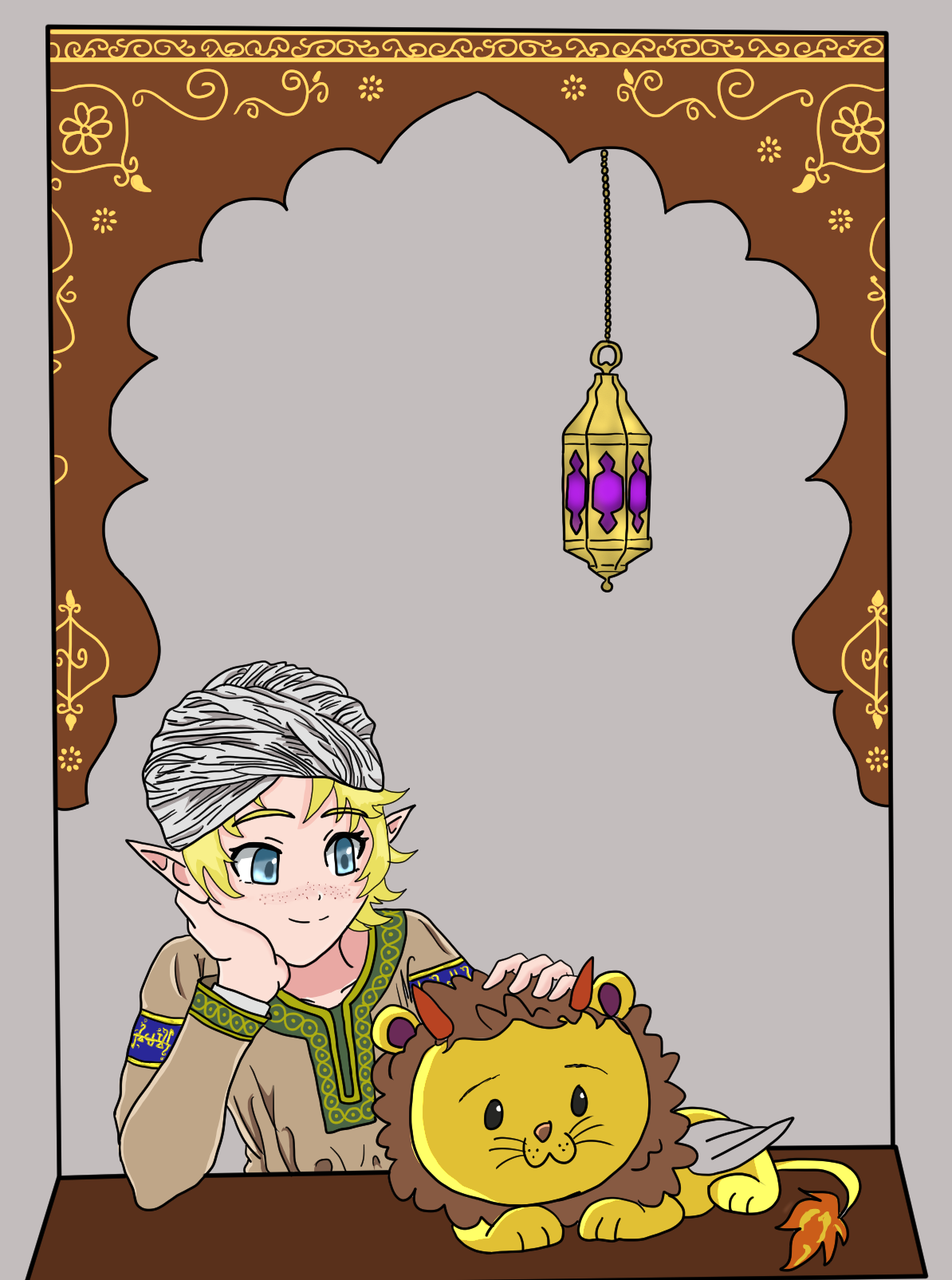Though not as important as the neighbouring Temple of Godyna, this temple located near the city of Myron in Lower Oronia attracts lots of pilgrims due to its healing waters and its famous oracle. This temple is not only a temple for the Oronians, it's also a Pandavidovian temple, so open to all Ikarians/Blatians, Seris (and to Kallians before their asimilation by the Ikarians, and also to the Crorai before they adopted black magic ) who want to heal themselves through its water or who want to ask a question to the goddess.
Mythological origins

Orbaia by Callyxtus
According to mythology, after having travelled all around the world, Orbaia didn't know where to build its temple, for her all the places she had visited were beautiful and ideal spots for her temple to be built. So he asked her grandfather
Abbon Shabai, the god of wisdom, the king of the gods for advice. She told him about all the lands she had visited and the King of the Gods agreed that all the places were wonderful spots for a temple and couldn't decide which place to choose.
So, in his infinite wisdom he came out with a brilliant idea, he picked a fern leave (one of the symbols of the goddess) and said:
"Wherever this leaf falls, there you should build your temple". The threw it from the heavens and the leaf landed in the spot where the temple is located. Then Orbaia descended from the heavens mounted on a giant eagle and with her sceptre she made several holes in the ground from which water began to emanate and thus the springs that we know were formed.
Description of the Temple
Early History
The earliest mention to the temple and the earliest structure attested at the site dates back to 530 BP. This early structure was the Sphinean fountain, one of the holy springs of the sanctuary.

Sphinean fountain by Ubisoft
The early temple to Orbaia was made of wood as many early Oronai temples. It probably had a painted frieze, now gone and the interior walls were covered in paintings representing sea creatures as well as athletic competitions. The plan of the building was typical of every Oronai and Ikarian temples, with a cella or chamber where the statue of the goddess was located and behind it another room or chamber called Opisthodomos, that sometimes, as it was the case at the temple of Orbaia, was used as a Treasury were votive objects to the goddess by the different Oronai cities or other Davidovian nations were stored. The cella, made of wood and decorated with sporting scenes with athletes, is the only wooden element of the old temple that survived its reform.
Reforms and current state
The old wooden structure of the temple (aside of the aforementioned cella) was replaced with marble stone between 410 and 386 BP. Financed mostly by the Oronai Pentapolis League as well as some money from the Royal Treasury and donations of pilgrims since this place quickly became a popular tourist and religious attraction. Its architect was Alphias of Thios. The new temple became one of the biggest temples in the whole of Oronia, and it became very famous for its rich decoration. A frieze representing the procession of Orbaia's festival was sculpted and placed in the outer walls of the temple. It represents scenes like the boat carrying the statue of the goddess returning to the sanctuary from the city of Myron. A second frieze decorates the interior of the temple which illustrates events from the
The Siege of Dorstulon, the city of the Ten Walls. Above both pediments, on both the north and south sides of the temple there are two statues, the one on the south side, the main entrance to the cella, represents Orbaia, and the one on the north side represents his half-sister Godyna. The pediment of the south area, the main entrance to the temple and the cella where the statue of the goddess is located is decorated with sculptures representing the wedding of Abbon Shabai and Tyr while the pediment of the northern area is decorated with sculptures representing Orbaia and the personifications of various rivers of Oronia.

Sanctuary of Orbaia by Callyxtus
Aside of this reform, Alphias also built the western Tholos, also known as the Tholos of the Oracle, a circular temple where the fountain of Prophecies, once exposed, was located and where its priest (called
"Hydormeneus" or the one who interprets the water) delivered the messages and prophecies from the goddess Orbaia deciphering the sound of the waters or listening to the voices that are heard through the water that are believed to come from the Heavens. This Tholos was also built in marble, both the walls and the columns as well as the roof. Its door is made of gold and has both lion heads as well as busts of the goddess represented in it. The water from which the fountain is supplied comes, through a series of pipes that are located below the sanctuary, from one of these holy springs called the Aripides spring.
In front of it its located the altar where sacrifices and libations to the goddess were carried out. And South of the temple is where the other pools filled with water from the springs were located and were people bathe. Other buildings were added to the temple complex in the following centuries. In 213 BP a stone theatre was built in the nearby Navadas hill where plays were represented during the festival in honour of the goddess. And in 129 BP,
Amyntas V, king of Oronia built a two- storey stoa, a portico, east of the Temple of Orbaia that, since is construction, has been used for multiple purposes such as an art gallery, a place for traders to sell their gods, for priests to sell statuettes of
Orbaia, for pilgrims to spend the night and also as a way of royal propaganda because the upper floor contains statues of Oronai Kings as well as famous paintings of their victories.
Rituals and worship at the temple
Before entering the precinct both the priests and priestesses as well as the pilgrims have to bathe there in order to get rid of the impurities from outside and purify themselves.
While entering and visiting the temple and its precinct the pilgrims have to carry fern leaves (called Phentos in Oronai) which are the plants associated with the goddess. These leaves also decorate the interior of the temple and are also the leaves that the "Hydormeneus" holds while deciphering the sounds of the waters.

Hydormeneus priest by Callyxtus
The most important festival celebrated here is the Myroneian Festival or the Myroneian games. They date back to the 5th century BP and last two weeks, during the first week the statue of the goddess travels by boat to the city of Myron and stays there for a week, during this time the athletic competitions are held at the temple precinct, and in the last week the theatre, dance and singing competitions take place. The awards ceremony for these competitions coincides with the return of the goddess's statue to the temple.












What a great article! I really love the story behind how the location for the temple was decided. The art of the priest is my favourite.
Explore Etrea | March of 31 Tales
Thank youuuu!!! ^^